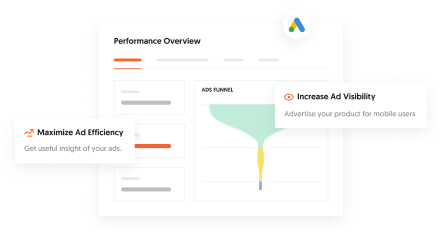As a Freelance Web Design Consultant, setting the right price for website design services is essential for ensuring a profitable and sustainable business. This guide provides an in-depth look at how to determine fair, competitive, and profitable rates, incorporating factors like website costs, website builder costs, and the overall complexity of design solutions.
1. Why Accurate Pricing is Crucial in Website Design
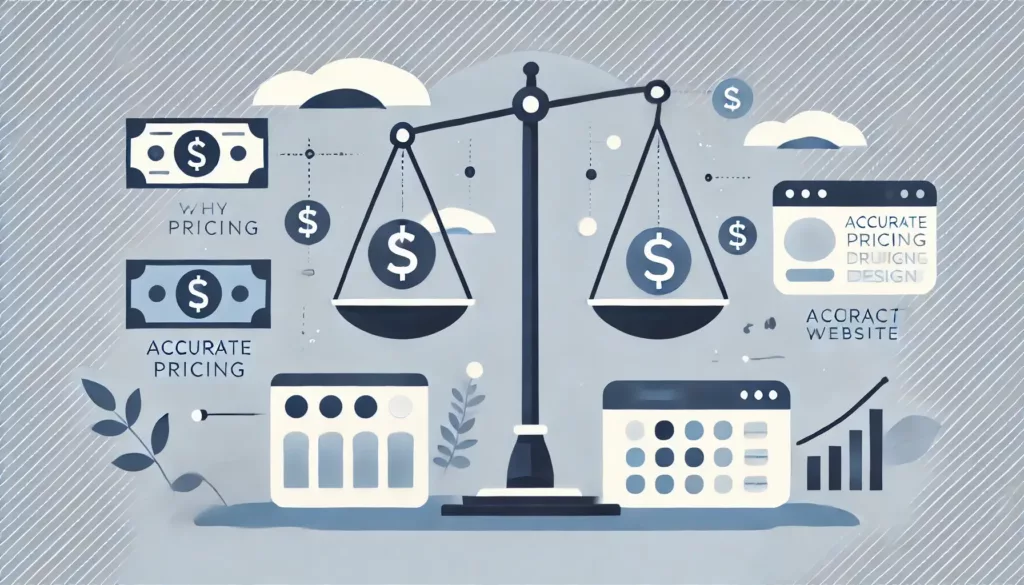
Impact on Profitability
Accurate pricing in website design is crucial for maintaining profitability. Underpricing can lead to increased workload without proportional financial gain, while overpricing might scare away potential clients. Your goal should be to balance these aspects to optimize resource utilization and ensure steady growth.
Example Scenario: Imagine you’re charging $25 per hour for designing a new website with basic features like SSL certificates and responsive design. If you work 30 billable hours a week, your income will be around $750 weekly. However, increasing your rate to $50 per hour would not only double your income but also better reflect the complexity of tasks such as integrating ecommerce functionality or email marketing features.
Client Perception
Your pricing can also shape how clients perceive your website design services. For example, a higher rate might signal that you offer premium services like advanced content management systems or organic transactions optimization, which are critical for websites focused on ecommerce sales.
Data Insight: Clients looking for good website design often associate higher costs with better quality. For instance, pro designers who specialize in complex website builders and functionality matter typically charge more due to their expertise.
Avoiding Underpricing and Overpricing
It’s important to avoid underpricing your website design services, as this can lead to a cycle of high workload with low financial returns. Conversely, overpricing without providing significant value—like next-level approaches in integration or all-in-one CRM platforms—might result in losing clients to more reasonably priced competitors.
Example Scenario: Consider a designer who undercharges for a project that involves building a comprehensive ecommerce website with advanced functionality cost considerations, like . Underpricing in such a scenario not only undermines the value of the work but also fails to cover the hosting costs and domain name registration fees required for an effective website launch.
2. Factors Influencing Website Design Pricing

Experience Level
The level of experience directly influences how much you should charge for website design. Clients are generally willing to pay more for a designer who has a proven track record of creating websites with advanced features such as interactive media or email marketing automation.
Pricing Table for Experience Level:
| Experience Level | Hourly Rate (USD) | Small Business Website (5-10 Pages) | Ecommerce Website (Custom Features) |
|---|---|---|---|
| Beginner (0-2 years) | $25 – $50 | $1,000 – $2,500 | $3,000 – $5,000 |
| Intermediate (2-5 years) | $50 – $100 | $2,500 – $5,000 | $5,000 – $10,000 |
| Expert (5+ years) | $100 – $200+ | $5,000 – $10,000 | $10,000 – $20,000+ |
Project Scope and Complexity
The complexity of a project, such as whether it includes ecommerce functionality, website hosting considerations, or custom content management systems, greatly impacts pricing. More intricate designs, especially those that require integration with platforms like revenue acceleration platforms or the use of interactive media, will naturally command higher fees.
Pricing Table for Project Complexity:
| Project Type | Average Price Range (USD) |
|---|---|
| Simple Brochure Website | $1,000 – $2,500 |
| Mid-Level Business Website | $2,500 – $7,500 |
| Advanced E-commerce Website | $7,500 – $20,000+ |
| Custom Web Application | $20,000 – $50,000+ |
Geographical Location
Geographical factors play a significant role in pricing. For instance, website design costs in urban areas of the United States will be higher compared to rural locations or even globally competitive markets like South Asia. Additionally, local expertise in website builders or good website design principles can justify higher rates.
Pricing Table for Geographical Location:
| Region | Hourly Rate (USD) | Small Business Website | E-commerce Website |
|---|---|---|---|
| United States (Urban) | $100 – $200 | $5,000 – $10,000 | $10,000 – $20,000+ |
| United States (Rural) | $50 – $100 | $2,500 – $5,000 | $5,000 – $10,000 |
| Western Europe | $75 – $150 | $3,000 – $7,500 | $7,500 – $15,000 |
| South Asia | $15 – $50 | $500 – $2,500 | $2,500 – $5,000 |
| Australia | $80 – $150 | $4,000 – $8,000 | $8,000 – $16,000 |
Client’s Budget and Business Size
Understanding your client’s budget is essential when determining your rates. For example, small businesses might prioritize website costs related to domain name registration and SSL certificates, while larger corporations might focus on complex features like an all-in-one CRM platform or advanced ecommerce functionality.
Example Scenario: A startup might have a budget of $2,000 to $5,000 for a simple, responsive design website, whereas a large enterprise could be willing to invest $10,000 to $50,000 for a new website with extensive interactive media and email marketing features.
Project Timeline and Urgency
Urgency can justify higher pricing. Projects with tight deadlines often require you to prioritize them over other work, which can affect your overall resource utilization. Charging a premium for urgent projects ensures that you’re compensated fairly for the increased effort.
Example Scenario: A client needs a website launched within two weeks to coincide with a marketing campaign. Normally, you would charge $5,000, but due to the urgency, you increase the fee to $7,500, factoring in the additional resource utilization and next-level approach required.
Technology and Tools
The cost of tools, like website builders, hosting services, or domain name registration, should be considered when setting your rates. If you’re using premium tools or third-party services that require ongoing costs, these should be factored into your pricing.
Example Data Point: Website builder cost factors can vary significantly, with some all-in-one CRM platforms or ecommerce integrations requiring substantial investment. Incorporating these costs into your pricing ensures that your services remain profitable.
Additional Services
Offering additional services like email marketing, SEO, or integration with advertising platforms like Google Ads can increase the overall project cost. These related services are essential for clients looking to maximize their online presence and can justify higher pricing.
Pricing Table for Additional Services:
| Service | Price Range (USD) |
|---|---|
| SEO Optimization | $500 – $2,000 |
| Email Marketing | $1,000 – $5,000 |
| Ongoing Maintenance | $100 – $500 (monthly) |
| E-commerce Setup | $1,000 – $5,000 |
Example Scenario: A client opts for a comprehensive package that includes website design, email marketing setup, and Google Ads integration. The total cost, including ongoing maintenance, might range from $8,000 to $15,000, depending on the complexity of the ecommerce functionality and drip campaigns.
3. Popular Pricing Models for Website Design
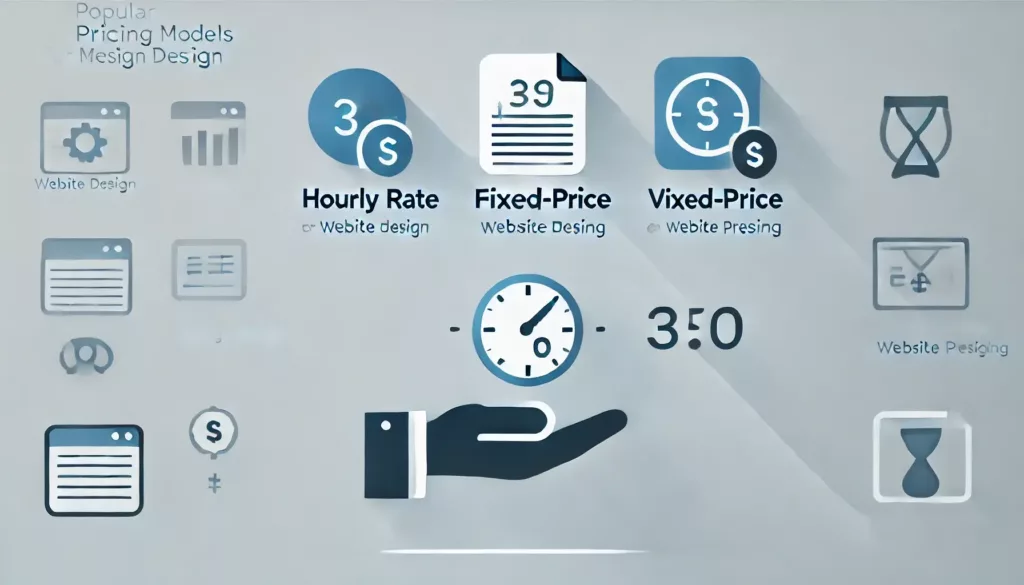
Hourly Rate
Charging by the hour is common for projects where the scope might change frequently. This model ensures you’re compensated for every hour worked, which is particularly important for ongoing projects or those requiring regular updates like hosting cost management or SSL certificate renewals.
Pros:
- Flexibility in accommodating changes.
- Clear billing based on time spent.
Cons:
- Uncertainty for clients regarding total costs.
- Potential for scope creep without clear boundaries.
Example Data Point: According to PayScale, the median hourly rate for web designers in the U.S. is approximately $50, but this can vary based on factors like website builder costs or the integration of advanced functionalities.
Fixed-Price Projects
Fixed-price models are ideal for well-defined projects where the scope is clear from the outset. This approach is particularly effective for projects with specific deliverables like a new website launch or an existing website redesign with updated features such as interactive media or carousel and hero images.
Pros:
- Predictable costs for clients.
- Easier to manage and plan resources.
Cons:
- Risk of underestimating time and resources needed.
- Potential for disputes if scope changes.
Pricing Table for Fixed-Price Projects:
| Project Type | Price Range (USD) |
|---|---|
| Simple Website | $1,500 – $3,000 |
| Mid-Level Business Website | $3,000 – $7,500 |
| Complex E-commerce Website | $7,500 – $20,000+ |
Value-Based Pricing
Value-based pricing involves setting your rates based on the value delivered to the client, rather than just the time spent on the project. This model works well for
projects where the impact on the client’s business—such as increased ecommerce sales or improved lead generation through email marketing—can be directly linked to the website design.
Pros:
- Higher potential earnings.
- Positions you as a strategic partner.
Cons:
- Requires a deep understanding of the client’s business.
- Can be challenging to justify to clients unfamiliar with the concept.
Example Scenario: A client hires you to design a website with advanced ecommerce functionality. If this functionality is expected to drive $100,000 in additional sales annually, you might charge $15,000, reflecting the value you bring to their business.
Package Pricing
Offering tiered packages—such as Basic, Standard, and Premium—makes it easier for clients to select services that fit their needs and budget. This approach is particularly useful when bundling services like website design, hosting, and email marketing, along with additional features like SSL certificates, ecommerce functionality, and responsive design.
Pros:
- Simplifies the sales process for clients.
- Encourages clients to upgrade to higher tiers.
- Allows you to bundle related services, like website hosting and email marketing.
Cons:
- Requires careful planning to ensure profitability for each package.
- Clients may gravitate toward the lowest package, potentially reducing profitability.
Example Pricing Table for Package Pricing:
| Package | Price (USD) | Included Services |
|---|---|---|
| Basic | $1,500 | 5-page website, basic SSL certificate, contact form, domain name |
| Standard | $3,000 | 10-page website, responsive design, SEO setup, ecommerce functionality, website hosting for 1 year |
| Premium | $5,000 | 15-page website, advanced SEO, Google Ads integration, email marketing setup, ecommerce functionality, ongoing maintenance |
Example Scenario: A client opts for the Premium package at $5,000, which includes a full-featured ecommerce platform, Google Ads integration, and a drip campaign for email marketing. The bundled services provide significant value, justifying the higher cost, and the client sees an increase in ecommerce sales as a result.
Retainer Agreements
A retainer model involves clients paying a set fee each month for ongoing services, such as website maintenance, hosting, and content updates. This approach provides consistent income while offering the client ongoing support for their website.
Pros:
- Provides steady, predictable revenue.
- Builds long-term relationships with clients.
- Ensures continuous work without needing to pitch new projects.
Cons:
- Requires consistent delivery of value to justify the retainer fee.
- Can lead to scope creep if not clearly defined.
Example Data Point: Designers offering retainer agreements for ongoing services, such as managing hosting costs and providing website updates, report earning 20-30% more annually than those who focus solely on project-based work.
Pricing Table for Retainer Agreements:
| Service | Monthly Retainer (USD) | Included Services |
|---|---|---|
| Basic Maintenance | $500 | Website hosting, security updates, backups |
| SEO and Marketing | $1,000 | SEO optimization, email marketing, analytics |
| Full-Service Retainer | $2,500 | Hosting, content management, ecommerce support, Google Ads management |
Example Scenario: A client signs up for a full-service retainer at $2,500 per month. This package includes everything from managing their ecommerce platform to running Google Ads campaigns and drip marketing via email. The client receives continuous support and sees an increase in website performance and revenue.
4. How to Calculate Your Website Design Rates

Step 1: Determine Your Desired Annual Income
First, establish your desired annual income, taking into account factors like living expenses, taxes, and business overhead. This will serve as your target income when determining hourly rates or project fees.
Example Calculation: Suppose you want to earn $80,000 annually. This amount should cover your personal expenses, website design tools, domain names, and SSL certificates, as well as leave room for profit.
Step 2: Estimate Your Billable Hours
Next, estimate the number of billable hours you can realistically work in a year. Be sure to account for non-billable activities, such as marketing, networking, and administrative tasks.
Example Calculation: If you expect to work 40 hours a week but only 25 of those hours are billable, that gives you around 1,250 billable hours annually (25 hours x 50 weeks).
Step 3: Calculate Your Hourly Rate
Divide your desired annual income by your estimated billable hours to determine your baseline hourly rate.
Example Calculation: $80,000 ÷ 1,250 billable hours = $64 per hour. This would be the minimum rate you should charge to meet your income goals.
Step 4: Add Overhead Costs
Factor in overhead costs, such as website hosting, software subscriptions, and domain name registration fees. These expenses should be included in your pricing to ensure profitability.
Example Data Point: If your annual overhead costs (hosting costs, website builder fees, SSL certificates) amount to $10,000, you’ll need to adjust your rate accordingly. For example:
$80,000 (income goal) + $10,000 (overhead) ÷ 1,250 billable hours = $72 per hour.
Step 5: Include a Profit Margin
Adding a profit margin ensures that you’re not just covering costs but also generating a profit. Depending on your goals, this margin could range from 10% to 30%.
Example Calculation: If you add a 20% profit margin, your hourly rate would increase to $86.40 ($72 x 1.20).
Step 6: Factor in Taxes
Taxes can take a significant portion of your income, so it’s essential to include them in your pricing. Depending on your location, this could add 10-30% to your final rate.
Example Calculation: Assuming a 20% tax rate, your final hourly rate might be around $104 ($86.40 + 20%).
Real-World Example of Pricing Calculation
Let’s say your goal is to earn $80,000 annually, with $10,000 in overhead costs and a 20% profit margin. You expect to bill 1,250 hours annually.
Final Calculation:
- Base hourly rate: $80,000 ÷ 1,250 hours = $64
- Overhead: $10,000 ÷ 1,250 hours = $8
- Profit margin (20%): $72 x 1.20 = $86.40
- Tax (20%): $86.40 + 20% = $103.68 (rounded to $104 per hour)
This calculation suggests you should charge at least $104 per hour to meet your financial goals.
5. Industry Pricing Standards and Benchmarks
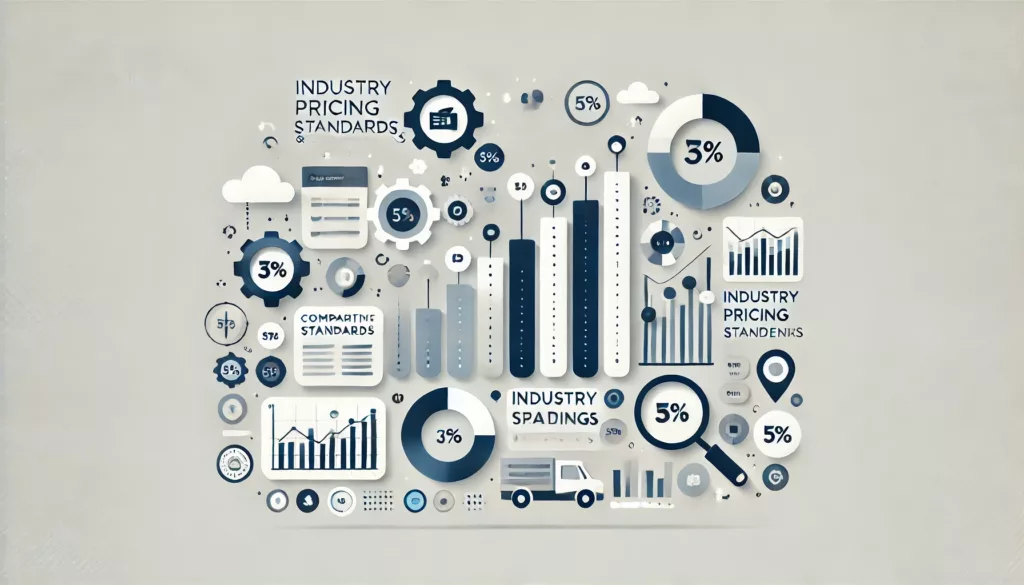
Current Market Rates
Knowing industry pricing standards helps ensure you’re charging competitive rates. For example, freelancers often charge less than agencies due to lower overhead, but they can still command high rates if they specialize in key areas like ecommerce functionality or interactive media.
Example Data Point: A report by PayScale shows that the median hourly rate for freelance web designers is around $30 to $50, but rates can go as high as $150 per hour for specialized projects involving high-demand features like ecommerce platforms and email marketing integration.
Freelancer vs. Agency Pricing
Freelancers generally charge less than agencies because they have fewer expenses. However, freelancers who offer unique value propositions—such as DIY website design expertise, organic transactions optimization, or integration with advertising platforms like Google Ads—can command higher prices.
Example Scenario: As a freelancer, you might charge $75 per hour, while a design agency might charge $150 per hour for the same project. The agency’s higher rate reflects its larger team, more extensive services, and added overhead costs like employee salaries and office space.
Global vs. Local Pricing
Global competition can drive prices down, especially with the availability of lower-cost services from designers in regions with lower living expenses. However, local expertise, particularly in website marketing prices or functionality matter specific to certain industries, can justify charging a premium.
Example Data Point: A study by the World Economic Forum highlights that freelancers in countries like the United States or Australia charge significantly more than their counterparts in regions like South Asia, where freelancer website design costs are often lower.
6. How to Adjust Your Prices Over Time

When to Raise Your Rates
It’s essential to regularly review and adjust your pricing to reflect your growing skills, demand for your services, and market conditions. If you’re offering new features like ecommerce sales optimization, carousel and hero images, or drip campaign integrations, this should be reflected in your rates.
Example Data Point: According to a survey by Upwork, freelancers who review and raise their rates annually report higher earnings and more job satisfaction. Aim to increase your rates by 10-20% every 1-2 years, especially if your services now include advanced features like interactive media or revenue acceleration platforms.
How to Communicate Price Increases to Clients
When raising your rates, transparency is key. Provide clients with clear communication and justification for the increase, focusing on the added value you bring, such as improved functionality, new services, or better website hosting and maintenance.
Example Script: “Dear [Client Name],
As we continue to improve and expand our services, including [new features like ecommerce functionality or email marketing], I wanted to inform you of an upcoming change in my pricing structure. Starting [date], my new rates will be [new rates]. This adjustment reflects the enhanced value and expertise I now provide to ensure your website continues to perform at its best. Thank you for your understanding.”
Discounts and Promotions
Offering strategic discounts can help attract new clients or reward existing ones. For example, you could offer a discount on hosting costs or a website cost calculator consultation to encourage new clients to sign on.
Example Scenario: A client approaches you for a new website, and you offer a 10% discount on website builder costs for first-time customers. This promotional offer helps you secure the client while still maintaining profitability.
7. Common Pricing Mistakes to Avoid
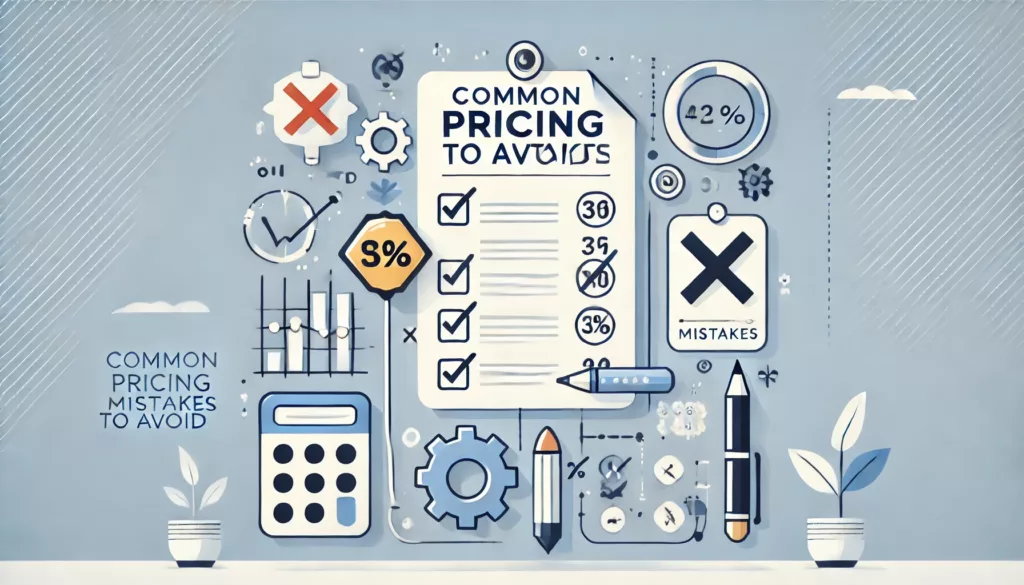
Underpricing Your Services
One of the most common mistakes is underpricing your services, particularly when starting out. While it might attract more clients initially, it often leads to burnout and financial strain, especially if the project involves complex integrations like ecommerce functionality or email marketing automation.
Example Data Point: The Freelancers Union reports that 60% of freelancers who underprice their services experience financial stress and burnout. Ensuring your rates reflect the true value of your work is crucial for long-term success.
Not Accounting for Revisions and Scope Creep
Scope creep, where a project’s requirements expand beyond the original agreement, is common in website design. Whether it’s adding new ecommerce features or redesigning existing website components, failing to account for these changes can lead to unpaid work.
Example Scenario: A client initially hires you to redesign a 5-page website but later requests additional pages, ecommerce integration, and a blog setup. If you don’t have clear terms in your contract for such changes, you could end up doing extra work without extra pay.
Ignoring Industry Trends
The web design industry is continually evolving, with new trends like mobile-first design, interactive media, and personalized content becoming standard. Ignoring these trends can make your services outdated and less competitive, affecting your ability to charge higher rates.
Example Data Point: According to Nielsen Norman Group, websites that embrace mobile-first design and interactive media see 30% higher engagement rates. Staying updated with these trends allows you to offer cutting-edge services that justify higher prices.
Failing to Set Clear Terms
It’s essential to clearly define all aspects of pricing, including payment schedules, revision limits, and scope definitions, in your contracts. This helps prevent misunderstandings and ensures you get paid fairly for your work.
Example Contract Clause: “All additional work beyond the agreed-upon project scope will be billed at [hourly rate] per hour. This includes any revisions or new functionality requests made after the project has commenced.”
8. Client Communication and Negotiation Strategies

Presenting Your Pricing to Clients
When presenting your pricing, focus on the value you provide rather than just the cost. Explain how your work will help the client achieve their goals, whether that’s increasing ecommerce sales, improving user experience, or enhancing their brand through effective email marketing strategies.
Example Script: “My rate for this project is $5,000, which includes a comprehensive website redesign with responsive design, ecommerce functionality, and SEO optimization. These features will not only improve your website’s performance but also enhance user experience, leading to higher conversions and increased sales.”
Handling Pricing Objections
Clients may sometimes push back on pricing, especially if they’re comparing your rates to DIY website design tools or lower-cost competitors. It’s important to remain confident in your rates and be prepared to justify them with examples of past successes and the value you bring.
Example Script: “I understand that the cost is a significant investment, but I’m confident that the value I’ll provide will far exceed the initial expense. Here’s how I’ve helped other clients achieve similar goals, and I believe we can achieve even better results for your business.”
Negotiating without Undermining Your Value
While negotiation is a natural part of business, avoid lowering your prices too much. Instead, consider adjusting the project scope or offering additional services at a discounted rate to meet the client’s budget.
Example Scenario: A client wants to reduce your $10,000 quote to $7,500. Instead of reducing your rate, you could propose a scaled-down version of the project or offer a discount on related services, like website hosting or SEO, to make up the difference.
9. Real-Life Case Studies and Examples

Case Study 1: Pricing for a Small Business Website
For a small business client needing a basic website with 5-10 pages, you might charge between $2,500 and $5,000, depending on the complexity and additional services required.
Example Scenario: A local bakery requires a new website with a simple design for showcasing their menu, store locations, and a contact form. You charge them $3,000 for the project, which includes basic SSL certificate setup, domain name registration, and a responsive design to ensure their site looks great on all devices. The client is thrilled with the result, which not only attracts more customers but also increases online orders through a seamless user experience.
Case Study 2: E-commerce Website Pricing
For a more complex e-commerce site with custom features, the price could range from $7,500 to $20,000 or more. This would include functionality like product catalogs, payment gateway integrations, and custom user experience elements.
Example Scenario: An online clothing retailer hires you to develop an e-commerce website featuring a large product catalog, advanced filtering options, and a custom checkout process. You charge $15,000 for the project, which includes ongoing support for six months, integration with email marketing platforms for a drip campaign, and Google Ads setup to drive traffic. The client sees a 30% increase in sales within the first three months, validating the investment in a comprehensive and well-designed website.
Lessons Learned from These Examples
These examples highlight the importance of tailoring your pricing to the specific needs and expectations of each client. By understanding the client’s business goals and offering a comprehensive package that includes all necessary elements—from responsive design to advanced functionality—you can justify higher rates and build long-lasting client relationships.
10. Tools and Resources for Setting Your Website Design Rates

Pricing Calculators
Several online tools can help you determine your rates based on your desired income, estimated work hours, and other factors like overhead costs and market conditions. These calculators are especially useful for new designers who are still determining how to price their services effectively.
Example Resource: The Bonsai Freelance Rate Calculator allows you to input your desired annual income, work hours, and expenses to calculate an hourly rate that ensures profitability. Using a website cost calculator can also help you estimate the total cost of a project by accounting for elements like domain names, SSL certificates, hosting costs, and any additional functionality.
Industry Reports and Surveys
Staying informed about industry trends can help you set competitive rates that reflect current market conditions. Reports from organizations like AIGA (American Institute of Graphic Arts) and The Creative Group provide valuable data on pricing standards and industry benchmarks.
Example Resource: The Creative Group’s annual Salary Guide offers detailed information on salary ranges and freelance rates for creative professionals, including web designers. This guide is an excellent resource for understanding how your rates compare to industry standards and where you might need to adjust them to stay competitive.
Freelancer Communities and Forums
Engaging with other freelancers in communities such as Designer Hangout or forums like Reddit’s Freelance subreddit can provide practical advice, support, and insights on pricing strategies. These platforms allow you to discuss experiences with other designers, share tips, and stay updated on the latest trends and challenges in the industry.
Example Resource: Designer Hangout is a vibrant community for UX/UI and web designers that offers discussions on pricing, industry trends, and professional development. Engaging with peers through such platforms can help you refine your pricing strategies and adapt to changes in the market.
FAQ
How do I determine the right price for my services?
Consider factors like experience, project complexity, market rates, and your desired income. Use this guide and the tools mentioned to calculate a fair rate.
What should I consider when setting my prices?
Include your overhead costs, taxes, desired profit margin, and the value you provide to your clients.
How do I handle clients who think my prices are too high?
Justify your rates by explaining the value you bring and offering examples of past work. If necessary, consider adjusting the project scope to meet their budget.
Is it better to charge hourly or per project?
It depends on the project. Hourly rates work well for smaller, less defined projects, while fixed pricing is better for clearly defined projects with set deliverables.
How can I increase my prices without losing clients?
Communicate any price increases clearly and professionally. Justify the increase by explaining how your skills and services have improved.
Conclusion
Summary of Key Points
Setting the right price for your website design services involves understanding your value, researching market rates, and considering factors like experience, project scope, and client budget. Whether you choose to charge hourly, by project, or through a value-based model, the key is to remain flexible and willing to adjust your rates as your business grows.
Encouragement to Regularly Review Your Rates
The web design industry is dynamic, and your pricing should reflect that. Regularly reviewing and adjusting your rates ensures you stay competitive and that your income aligns with your business goals.
If you’ve found this guide helpful or if you have any questions about pricing your services, feel free to reach out or leave a comment below. I’d love to hear your thoughts and experiences with setting web design rates.



